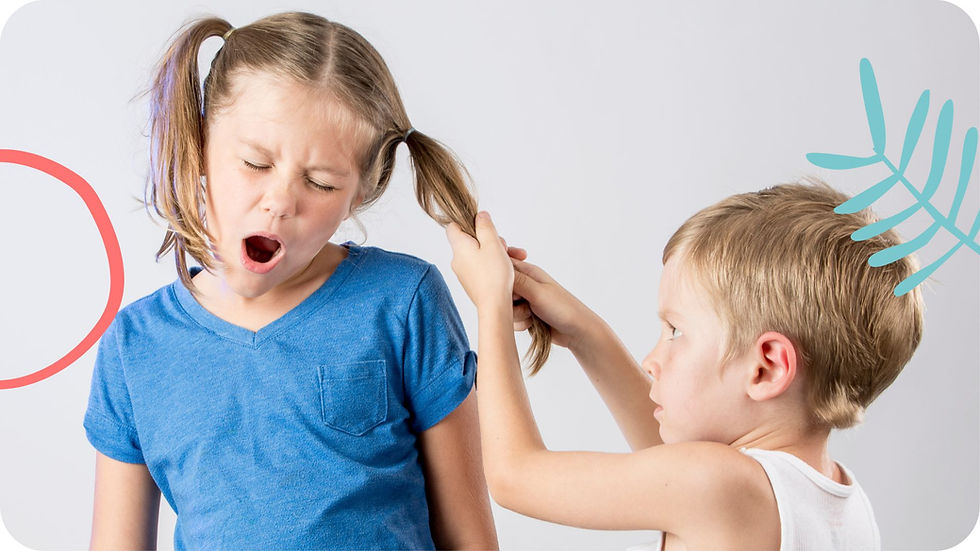Behavior - regulated vs. dysregulated
- Penny Williams
- Jul 25, 2023
- 4 min read
My name is Penny Williams, and I am a parenting coach for neurodiverse families like
yours, and I am here to talk to you about regulated versus dysregulated behavior.
The first thing I want to talk to you about is just changing the language that you use to describe your child's behavior. Behavior isn't good or bad. It's just behavior, it is neutral. Until we decide what it is and the story, we're going to tell ourselves about it. And really behavior is either regulated, or it is dysregulated. Those are the two options.
Regulated behavior: What we deem good behavior is actually regulated behavior. That child's nervous system is feeling calm and connected, it has the energy to match the situation, that child is feeling good, and capable and confident. That is when we see kids who are calm, respectful, they're engaged, they're doing well, socially, they're meeting expectations.
Dysregulated behavior: When we are dysregulated, that is where we cannot manage. Our nervous system is sending up flares, emergency flares, emergency signals, that something is wrong, the body is doing this, and it is causing dysregulation. And when a child is dysregulated, their thinking brain is going offline, it is not accessible, they cannot process what you are saying. So you might see dysregulated behavior through yelling, defiance, a child who is trying to run away a child who's trying to avoid a kid who is kind of putting their quills up, they are fighting, they might be arguing with you, they might be physically swinging, they might also be shut down, and they just are not engaging at all. Those are all signs of dysregulation. And those signs are telling you that there is something going on in your child's body that is making them feel unsafe, they do not have a felt sense of safety. They're dysregulated.
Activities to help your child regulate
There's so many things that we can do to help our kids to get regulated to stay regulated. And it's about finding the right activities, the right responses that help that individual. So maybe it is a weighted blanket, maybe it's blowing bubbles, maybe it's splashing cold water on their face. Maybe it's blowing on a pinwheel, it could be just going for a walk, or counting to five, it could be noticing five things I see. Noticing five things I smell, noticing five things I can touch, what are those textures, all of these things are really important to help our kids to regulate because we're helping their body, their nervous system to calm down.
Setting expectations for your child
You always have to be looking for that dysregulation when you're setting expectations or when your child is having a hard time and you're struggling. For instance, let's think about an example of doing homework. A lot of our kids struggle with doing homework, they have spent all day working very, very hard to try to fit into a neurotypical system and neurotypical expectations that they just don't have the skills for. They're very spent, when they come home. They don't have a lot of reserves, to give to homework. And frankly, they don't want to do any more of that really hard, challenging schoolwork. But we feel very strongly that they're going to get that homework done. And so we can make our kids really dysregulated or just the thought of doing homework can make them dysregulated their body will say nope, I'm setting off the alarm. I can't do this. I can't do this. I don't want to do this. It's too hard right now. They're dysregulated and understanding that helps you to know how to respond. So if you have a kid who's super activated, they're like fight or flight in that dysregulation. Get up move around and have them go for a walk or bike ride or run out or jump on a trampoline, have them eat crunchy foods have them maybe jump rope while they're reciting their multiplication tables. Their body is telling them that they need to move, and we need to be able to honor those signals. That's just one example.
Understanding when your child is regulated and dysregulated is really going to help you to be an effective parent in those moments.
Featured video guide
Watch the full video guide in the Tracto app
Our video guides are created by experts in the field of neurodiversity and include parent-led strategies that improve communication skills, coping skills, independence, challenging behaviors, and many more.
How to use Tracto
How does Tracto help me with this?
The Tracto app makes it easy for parents, caregivers and educators to track a child's progress and behavior. Parents can track their children's development over time to identify areas for improvement and log behavior incidents, and track trends over time. In this way, parents can identify patterns, assess risks, and develop strategies to improve the child's behavior. Additionally, the app provides graphing and reporting functions that allow parents to visualize their child's progress.

Get the FREE Tracto app to access our expert-designed tools such as tracking, journaling, routine reminders, and more video guides.













